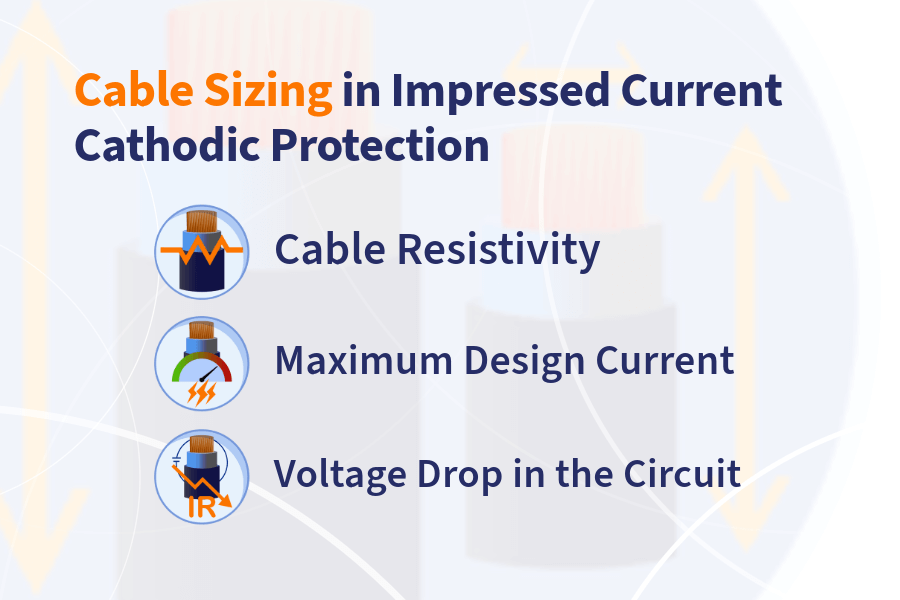
Cable sizing in the Impressed Current Cathodic Protection (ICCP) system is an essential design parameter, especially for distributed anode systems or those that need high protection current. In cable sizing, we are looking for the smallest suitable cable size. ICCP systems typically use low voltage cable, 06/1 kV. This rating is for AC and relates to the “phase”. For DC, the “phase” changes to the “conductor” concept, and its rating increases by approximately 50%. This means that low voltage cables in DC can tolerate up to 0.9/1.5 kV, which is much higher than the voltage used in cathodic protection circuits. As a result, the maximum voltage in the cathodic DC circuit is not a concern.
IR-Drop Calculation
The IR-Drop is an essential parameter in the cathodic protection circuit, especially where the cable is long. This is because the cable in the DC circuit works as a simple resistor. For example, for a cable size of 1×25 mm2 (AWG #4), the resistivity of the cable is 0.727 Ω/km. So if 25 A current is designed to pass through this cable for 200 m, the IR-Drop will be 3.635 Volt (0.727×0.001x200x25=3.635 V). The CP designer considers this voltage drop in the protection circuit analysis and TR output voltage. Some specifications limit the IR-Drop in the cable to certain thresholds, like 5% or 10%. This IR-Drop is wasting electricity to heat for its whole working life. Using bigger cable sections, which means more construction costs, will reduce the maintenance energy cost.
Maximum Current Capacity
Another aspect of sizing is the maximum current capacity of the cable. This is different from the IR-Drop. For example, the resistivity of a 1×10 mm2 (AWG #8) cable is 1.83 Ω/km. So for 20 cm the resistivity is 0.000366 Ω (1.83x.001×0.01×20=0.000366 Ω). Using this cable as a jumper, e.g. 20 cm, in a box for 100 A DC, the IR-Drop would be 0.0366 V, which is negligible. However, the maximum current capacity of this cable is around 70 A so the cable will burn very fast. For this reason, a small cable size is not allowed for a high DC, even for a short length with a low IR-Drop. The numbers used in the above text and inside the CCPTools application are based on typical cable datasheets and may be different for different producers. Nevertheless, the concept of cable sizing for impressed current cathodic protection systems is the same for all DC cables in the cathodic protection circuit.